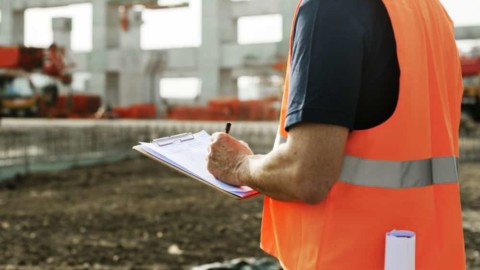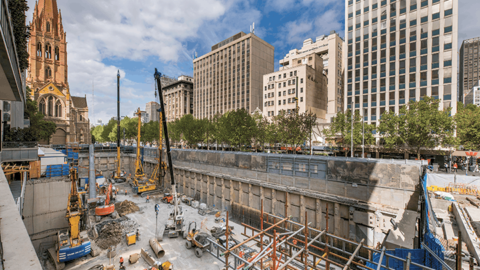by Mikayla Bridge, Journalist, Infrastructure Magazine
During her presentation at the 2022 Critical Infrastructure Summit, Rachel Smith, the Head of Government and Policy at the Australian Logistics Council (ALC), explored the current state of Australia’s logistics and freight sector, and the harmonisation that is needed in the future.
Ms Smith has more than eleven years of experience in policy, membership and strategic organisation, working closely with multiple divisions of State and Federal Governments as well as across a wide range of industries, including engineering, housing, health, pharmacy and supply chain.
The Australian Logistics Council represents major Australian logistics supply chain customers, providers, infrastructure owners and suppliers, throughout the entire supply chain.
Its work with all levels of government ensures that Ms Smith’s knowledge of the sector is timely, well-informed and consistent.
State of play
The freight sector is woven into the backbone of every Australian household. The common goods used by each Australian, including food, clothing, appliances and medicine are all transported by freight operators. The supply chain also provides fundamental materials used to build and operate critical community infrastructure such as roads, hospitals and schools.
Throughout 2020-2022, the supply chain has undergone a major upheaval, and Ms Smith’s presentation explored the challenges and opportunities the freight industry experienced during this period. Having joined ALC in August 2020, Ms Smith immediately began her new role by dealing with COVID border restrictions, surveillance testing regimes for truck drivers, and ensuring that freight could move uninhibited across Australia.
“Some of the many COVID related disruptions included high demand for imported goods transported by containers. For example, household electronics, furniture, machinery and medicine. Prices were pushed up as households were spending more money on goods rather than on travel and other COVID affected services,” Ms Smith said.
“Ship supply shortages as well as high fuel costs and labor shortages sent shipping prices higher, and port congestion and health protocols prevented port access.”
After two years of COVID-related challenges, Australia also faced extreme weather events like flooding, which recently cut off critical rail links into the Northern Territory and Western Australia, as well as recent global shortages of AdBlue and increased fuel prices.
“The freight and logistics sector has risen to the challenge time and time again, yet the interdependencies and critical points of failure, and the need for greater resilience, are now evident more than ever,” Ms Smith said.
In addition to these unforeseen challenges, Australia is facing increased capacity constraints as the nation’s population grows. Studies estimate that congestion costs will rise to $39.8 billion by 2031, which has already doubled since 2016 to 19 billion. Australia’s urban freight task is set to grow by 60 per cent by 2040.
Many businesses in 2021-22 have also doubled their e-commerce operations, and show no sign of stopping. This growth indicates a need to rethink the way businesses operate in line with consumer and community expectations. As Australia’s population grows, so do the freight tasks.
“There is this increasing need to preserve industrial land for warehouses and freight activities to support growth and address issues such as urban encroachment,” Ms Smith said.
“There is a forecasted additional need for 490,000m2 per annum of additional e-commerce dedicated logistics space required by 2025.
Over the next five years it forecasts an additional 2.4 million square metres of e-commerce dedicated logistic space will be required just in Australia.”
Harmonisation and up-skilling
In order to secure the future of Australia’s supply chain, Ms Smith said the sector needs increased harmonisation between jurisdictions and government.
“We are after all a single national economy. There are some challenges ahead in terms of road user charging reform, to ensure that we can adequately fund the roads that we use and that users pay their fair share,” Ms Smith said.
“Also, harmonisation of urban planning principles that adequately cater for the needs of freight, which are ultimately the expectations of consumers in the Australian community.
There’s also other opportunities in terms of skills and the transition to net zero economies.” According to Ms Smith, these opportunities must be explored because the current workforce in the freight and logistics sector is stretched to capacity.
As more and more tasks within the sector are digitised, more roles are converting from low-skilled to semi-skilled, and as we make the shift towards greener, more sustainable technology, such as electric vehicles, the roles and requirements of mechanics in the industry will shift.
“This is a challenge for industry, but also an opportunity to look at the way we attract, train and retain staff in a competitive employment market, such as Australia’s, particularly now with almost full employment,” Ms Smith said.
“With the challenges and demand for skills also comes the shift towards a net zero economy. The world is moving and the transport sector has an important role to play in helping Australia meet its emission reduction targets.
“We’re seeing a number of positive initiatives at the enterprise level, but the transition will be influenced by a range of factors, including access to the right technology, industry incentives, consumer expectations, regulatory settings and investor sentiment, as well as global capital markets.”
Many of these positive initiatives are the result – or require the need for – harmonisation across jurisdictions. Ms Smith said that natural disasters such as extreme weather conditions or COVID outbreaks require national responses, which go hand in hand with an interconnected supply chain.
Implementing national responses will require regulations to be reviewed and possibly retired in coming years, in order to create solutions to industry challenges that align with contemporary community ideals.
Despite the need for these changes, Ms Smith expressed optimism for the future of the freight and logistics sector. She said that state border restrictions due to COVID have highlighted the need for a national approach and for jurisdictions to work together, to ensure an interconnected supply chain and meeting the needs of Australians as a nation, not simply individual states.
Register for free to watch Rachel Smith’s presentation at the Critical Infrastructure Summit on demand by visiting: www.critical-infrastructure.com.au.


















